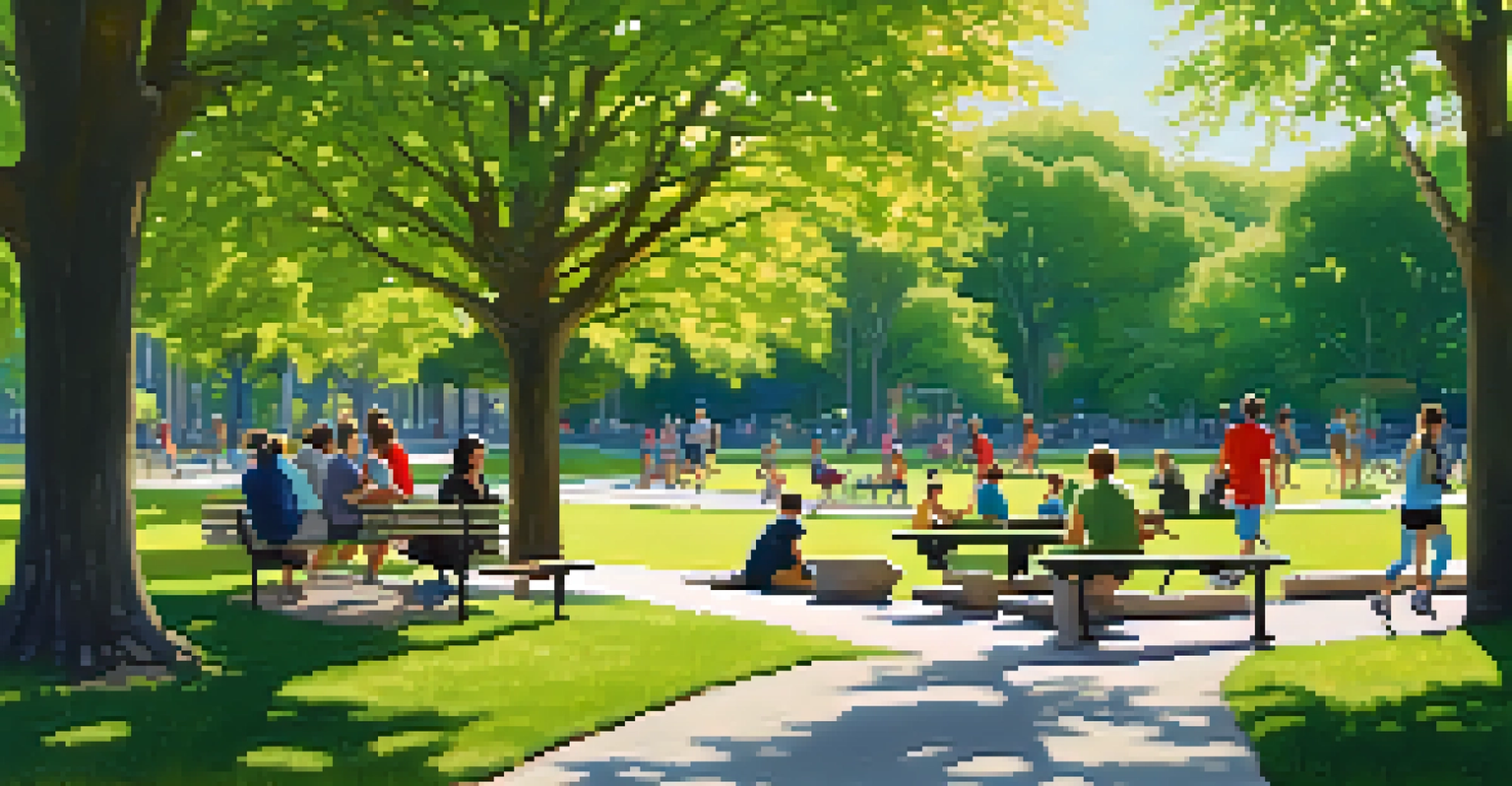Situational Awareness: The Key to Preventing Attacks

Understanding Situational Awareness in Daily Life
Situational awareness is essentially knowing what’s happening around you. It involves observing your surroundings, understanding the context, and predicting possible outcomes. Think of it like being a driver who constantly scans the road for pedestrians, traffic signals, and other vehicles to avoid accidents.
The greatest danger in times of turbulence is not the turbulence—it is to act with yesterday’s logic.
This awareness goes beyond just being alert; it’s about developing a mindset that keeps you engaged and attentive. When you walk into a room, for instance, notice not just who’s there but also the mood and energy of the space. This level of awareness helps you make better decisions in real-time.
Incorporating situational awareness into your daily routine can significantly enhance your safety. By being conscious of your environment, you are better equipped to identify potential threats and react swiftly, ultimately reducing the risk of becoming a victim.
The Importance of Awareness in Preventing Attacks
Being aware of your surroundings can be a crucial factor in preventing attacks. Criminals often look for easy targets—those who appear distracted or disengaged. By maintaining a level of vigilance, you can deter potential threats and make yourself a less appealing target.

Consider the example of a crowded subway station. If you’re focused on your phone, you might miss someone acting suspiciously nearby. On the other hand, if you’re observant, you can spot unusual behavior and take preventive actions, such as moving to a different part of the platform.
Situational Awareness Defined
Situational awareness involves observing your surroundings and understanding the context to make informed decisions.
Moreover, situational awareness empowers you to trust your instincts. If something doesn’t feel right, it probably isn’t. Listening to your gut and acting accordingly can help you avoid dangerous situations before they escalate.
Enhancing Your Situational Awareness Skills
Improving your situational awareness is a skill that can be developed over time. Start by practicing mindfulness—pay attention to your surroundings and the people in them. This practice can be as simple as observing details while waiting in line or taking a walk.
Awareness is the greatest agent for change.
Another effective technique is to engage in regular self-assessment. Ask yourself questions like, 'What do I see?' and 'What does this mean?' This habit will train your brain to process information quickly and respond effectively.
Lastly, role-playing scenarios with friends or family can also help sharpen your skills. By discussing various situations and how you would react, you can build a mental toolkit for real-life applications.
The Role of Technology in Situational Awareness
In today’s digital age, technology plays a significant role in enhancing situational awareness. Various apps and wearable devices can alert you to potential threats, whether it’s a suspicious person nearby or an emergency alert in your area. These tools can act as an additional layer of protection.
For instance, personal safety apps can share your location with trusted contacts, ensuring someone knows where you are in case of an emergency. Similarly, smart surveillance systems at home can notify you of unusual activity, giving you peace of mind.
Awareness Prevents Attacks
Being vigilant and engaged in your environment can deter potential threats and help you trust your instincts.
However, while technology can aid in awareness, it’s crucial not to rely solely on it. Maintaining personal vigilance is equally important. Technology should complement your awareness, not replace it.
Situational Awareness in Specific Environments
Different environments present unique challenges and require tailored situational awareness strategies. In crowded places like shopping malls or festivals, for example, being aware of exit routes and monitoring the crowd can help you stay safe.
Conversely, in quieter settings, such as a park, awareness might focus more on the individual interactions around you. Noticing if someone seems out of place can be a key indicator of potential trouble.
Ultimately, adapting your awareness tactics to fit each environment will enhance your ability to identify threats and ensure your safety, no matter where you are.
Training for Situational Awareness: Practical Tips
Training your situational awareness skills doesn’t have to be complicated. Start by conducting a simple observation drill wherever you are. Spend a few minutes noting details around you, such as who is nearby, what they’re doing, and any potential exits.
Additionally, consider enrolling in self-defense classes or workshops that emphasize situational awareness. These courses often incorporate real-life scenarios that can help you practice recognizing threats and responding appropriately.
Training Enhances Awareness Skills
Improving situational awareness can be achieved through mindfulness practices, self-assessment, and role-playing scenarios.
Finally, keep a journal of your experiences. Reflecting on moments when your situational awareness helped you avoid danger can reinforce the importance of this skill and motivate you to stay alert.
Conclusion: The Lifesaving Power of Awareness
In conclusion, situational awareness is an invaluable skill that can significantly reduce your chances of becoming a victim of an attack. By understanding your environment and remaining vigilant, you empower yourself to make safer choices.
Remember, awareness is not just about noticing what’s around you; it’s about cultivating a proactive mindset that prepares you for any situation. It’s a skill that requires practice and commitment but can ultimately save your life.

So, take a moment today to assess your surroundings and begin your journey towards heightened situational awareness. Your safety might depend on it.